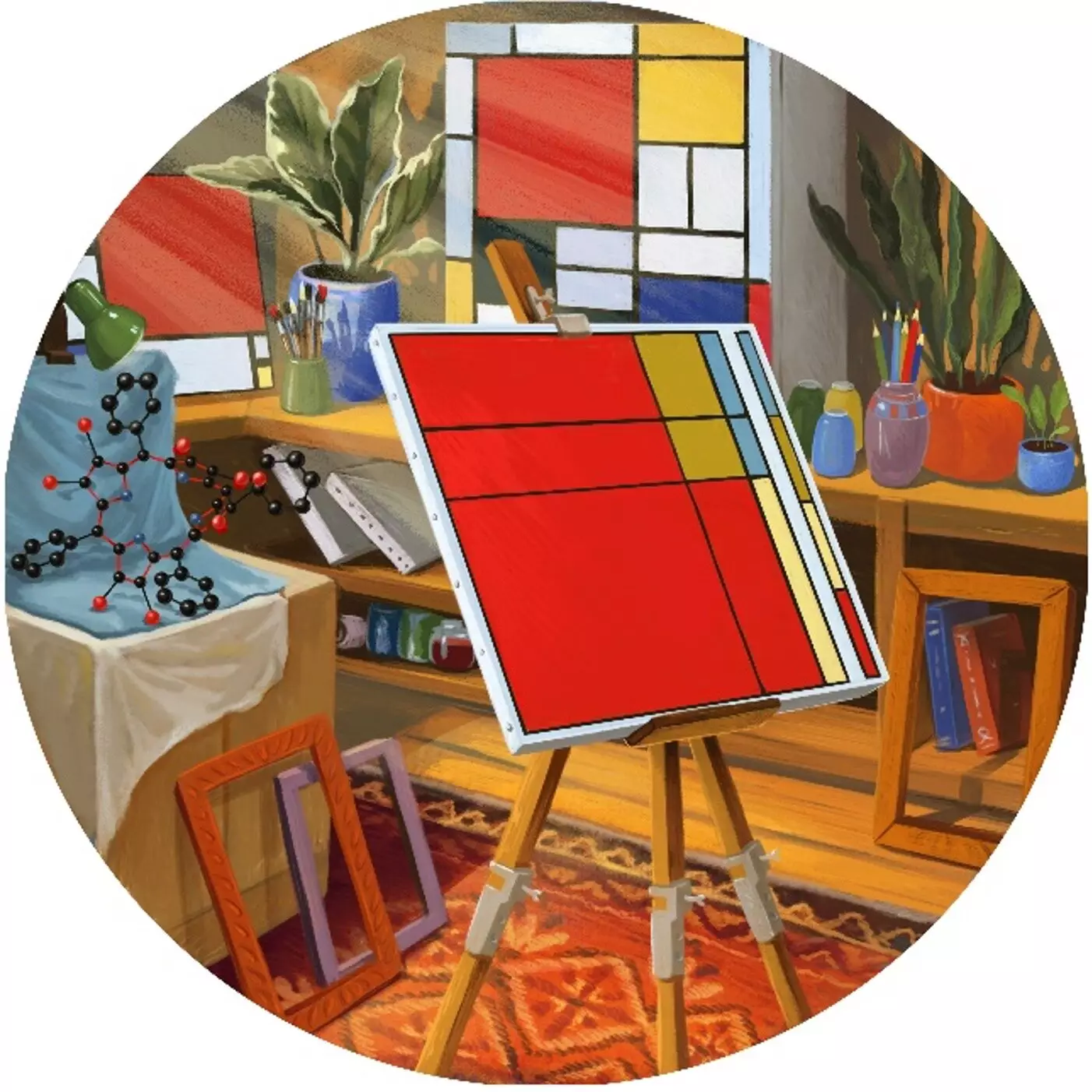In an innovative initiative emerging from Trinity College Dublin, researchers have ingeniously fused molecular chemistry with beloved artistic styles, notably those of Piet Mondrian. Throughout history, the evocative power of art has inspired countless individuals; now, scientists are harnessing that influence to illuminate the complexities of molecular structures. This intersection not only transforms the way we perceive both fields but also raises intriguing questions about how aesthetics can enhance scientific understanding.
The Essence of Mondrian’s Art
Mondrian’s artistic legacy is defined by simplicity and order, utilizing primary colors framed by stark black lines on a pristine white background. This aesthetic has transcended art galleries and permeated various aspects of modern culture, from interior design to fashion. Perhaps what makes Mondrian’s work so captivating is its ability to convey profound concepts through seemingly elementary means. Scientists, particularly in the fields of mathematics and statistics, have long drawn inspiration from his works, recognizing an inherent connection between his rigid forms and the underlying principles of symmetry that govern scientific phenomena.
The Artistic Algorithm: A Revolutionary Approach to Molecular Visualization
The project led by Mathias O Senge and his team takes Mondrian’s essence and breathes new life into it through a pioneering computer program. This software can “paint” molecular structures through an artistic lens, creating unique visual representations that reflect both chemical accuracy and aesthetic appeal. By converting complex 3D structures into 2D interpretations reminiscent of Mondrian’s art, these scientists unveil a novel method for presenting molecular symmetries. As described by Senge, this artistic interpretation enables a clearer comprehension of the relationship between molecular structure and the properties that emerge from it, shedding light on what might otherwise remain obscured in conventional scientific representations.
The Impact of Aesthetic Representation on Scientific Understanding
Beyond mere representation, the amalgamation of art and science facilitates a deeper understanding of molecular behavior. For chemists, having a universal visual language that encapsulates the behavior of molecules across diverse environments is indispensable. The program aids in deciphering how molecules interact with each other, changing form as they do so. This abstraction parallels Mondrian’s journey to distill complexity into fundamental truths, enabling scientists to present sophisticated phenomena in a manner recognizable to a broader audience.
Of course, while this artistic abstraction enriches the conveyance of complex scientific ideas, it also posits certain limitations. As Christopher Kingsbury highlighted, nuances may get lost in translation; however, the benefits of accessibility and beauty can often outweigh the drawbacks. By simplifying representations, the work invites not only scientists but also laypeople to engage with the world of molecules, which may ultimately inspire future generations of researchers and artists alike.
Chemistry and Art: A New Paradigm
The recent endeavors surrounding porphyrins, described as the “colors of life,” showcase yet another fascinating outcome of the art-science collaboration. By redesigning these vibrant pigments to mimic natural behaviors—such as those of Venus flytraps—researchers can create practical sensors for pollutants. This not only broadens the scope of chemical research but also reinvigorates the conversation about the intricate bonds between structure and function. The overlaps between porphyrin structures and Mondrian-inspired art challenge us to reconsider how we perceive both forms of expression.
Furthermore, this unique methodology inspires additional inquiries into how shapes and colors influence perceptions of molecular interactions. If great art encourages a reframing of reality, then perhaps these artistic representations of molecules will similarly provoke new ways of thinking about their intricate structures and behaviors.
The Bigger Picture: Why This Matters
At its core, this fusion of science and art advocates for a transformative understanding of both disciplines. By using visual artistry to present chemical structures, researchers are tearing down the barriers that often separate the scientific community from the general public. It accentuates the beauty intertwined within molecular architecture, demonstrating that science is not merely about numbers and formulas but also about patterns and visual storytelling.
Moreover, this intersection propels discussions around how we educate future scientists and artists. The notion that disciplines can inform and inspire one another leads to innovative learning experiences, ultimately encouraging creativity in scientific inquiry as much as it fosters analytical rigor in artistic creation. This newfound paradigm represents an exciting frontier where the worlds of art and science are not at odds but, rather, thrive in collaboration.


Leave a Reply